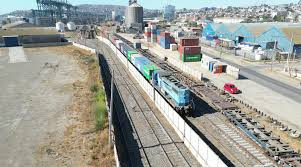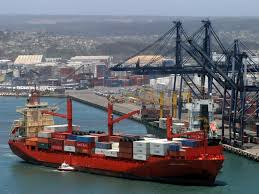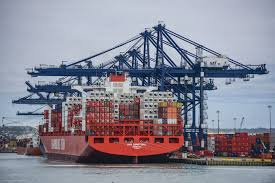How is the Port of San Antonio connected to the Chilean railway system?

How is the Port of San Antonio connected to the Chilean railway system?
How is the Port of San Antonio connected to the Chilean railway system? The Port of San Antonio is not only a vital maritime hub but also plays a significant role in the logistics and transportation network of Chile.
One of the key components of this network is its connection to the Chilean railway system.
This integration facilitates the efficient movement of goods between the port and various regions of the country.
Here’s an overview of how the Port of San Antonio connects to the Chilean railway system and its importance.
Strategic Location
The Port of San Antonio is strategically located near major railway lines, enhancing its logistical capabilities.
This proximity allows for the seamless transfer of cargo between sea and rail, optimizing the supply chain.
The port serves as a key entry and exit point for goods moving to and from inland destinations.
This makes it an essential node in the country’s transportation infrastructure.

Rail Freight Services
Rail freight services play a crucial role in transporting cargo from the port to various regions in Chile.
These services are used to move bulk goods, containers, and other types of cargo quickly and efficiently.
The integration of rail transport reduces road congestion and transportation costs, making it a favorable option for shippers.
Many companies rely on these services to enhance their supply chain efficiency.
Intermodal Transportation
The connection between the Port of San Antonio and the railway system supports intermodal transportation.
Intermodal transport involves using multiple modes of transportation to move goods from one place to another.
By combining maritime and rail transport, shippers can benefit from increased flexibility and efficiency.
This method is particularly beneficial for long-distance shipments, where rail can cover large inland distances effectively.
Infrastructure Investments
Significant investments have been made in infrastructure to enhance the connectivity between the port and the railway system.
Upgrades to rail lines, terminals, and intermodal facilities improve loading and unloading processes.
These developments ensure that cargo can be transferred quickly and safely, reducing turnaround times.
The modernization of infrastructure supports the growing demand for efficient logistics solutions.
Environmental Benefits
Utilizing the railway system in conjunction with the Port of San Antonio has environmental benefits as well.
Rail transport is generally more energy-efficient and produces lower greenhouse gas emissions compared to road transport.
By promoting rail transport for cargo movement, the port contributes to sustainable logistics practices.
This approach aligns with global trends toward reducing carbon footprints in transportation.
Enhanced Trade Opportunities
The connection to the railway system opens up enhanced trade opportunities for businesses using the Port of San Antonio.
Companies can access new markets more easily, increasing their competitiveness in both domestic and international markets.
This accessibility fosters economic growth and contributes to the development of the region.
Efficient logistics can attract more businesses to utilize the port and its services.
Collaboration with Rail Companies
The Port of San Antonio collaborates with various railway companies to optimize cargo transportation.
These partnerships ensure that freight services are reliable, timely, and meet the demands of shippers.
Communication between the port and rail operators facilitates better scheduling and coordination of shipments.
Such collaboration is essential for maintaining the efficiency of the supply chain.
Future Developments
Future developments are anticipated to further enhance the connection between the port and the railway system.
Plans for expanding rail lines, improving facilities, and increasing capacity are in progress.
These advancements will likely improve service quality and increase the volume of cargo transported via rail.
As logistics demands grow, the port’s role in the national transportation network will become even more significant.
The Port of San Antonio’s
The Port of San Antonio’s connection to the Chilean railway system is vital for efficient logistics and transportation.
This integration supports intermodal transport, enhances trade opportunities, and promotes sustainable practices.
As infrastructure continues to improve and collaboration with rail companies strengthens, the port will remain a key player in Chile’s economic landscape.
By understanding this connection, you can appreciate the role the Port of San Antonio plays in facilitating trade and supporting the national economy!





Leave a Reply